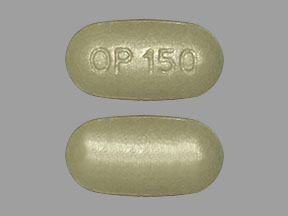Lynparza Side Effects
Generic name: olaparib
Medically reviewed by Drugs.com. Last updated on Nov 26, 2023.
Note: This document contains side effect information about olaparib. Some dosage forms listed on this page may not apply to the brand name Lynparza.
Applies to olaparib: oral tablet.
Serious side effects of Lynparza
Along with its needed effects, olaparib (the active ingredient contained in Lynparza) may cause some unwanted effects. Although not all of these side effects may occur, if they do occur they may need medical attention.
Check with your doctor immediately if any of the following side effects occur while taking olaparib:
More common
- Black, tarry stools
- bladder pain
- bleeding gums
- bloody or cloudy urine
- body aches or pain
- chest pain or tightness
- chills
- cough
- cough producing mucus
- diarrhea
- difficult, burning, or painful urination
- ear congestion or pain
- fast, pounding, or irregular heartbeat or pulse
- fever
- frequent urge to urinate
- general feeling of discomfort or illness
- head congestion
- headache
- hoarseness or other voice changes
- joint pain
- loss of appetite
- loss of voice
- lower back or side pain
- muscle aches and pains
- nausea
- pain or swelling in the arms or legs
- painful or difficult urination
- pale skin
- pinpoint red spots on the skin
- rapid shallow breathing
- runny or stuffy nose
- shivering
- sneezing
- sore throat
- sores, ulcers, or white spots on the lips or in the mouth
- sweating
- swollen glands
- trouble sleeping
- trouble breathing
- unusual bleeding or bruising
- unusual tiredness or weakness
- vomiting
Incidence not known
- Hives, itching, skin rash
- irritation
- joint stiffness or swelling
- redness of the skin
- swelling of the eyelids, face, lips, hands, or feet
- trouble swallowing
Other side effects of Lynparza
Some side effects of olaparib may occur that usually do not need medical attention. These side effects may go away during treatment as your body adjusts to the medicine. Also, your health care professional may be able to tell you about ways to prevent or reduce some of these side effects.
Check with your health care professional if any of the following side effects continue or are bothersome or if you have any questions about them:
More common
- Back pain
- belching
- blistering, crusting, irritation, itching, or reddening of the skin
- blurred vision
- burning, numbness, tingling, or painful sensations
- constipation
- cracked, dry, or scaly skin
- decreased appetite
- diarrhea
- difficulty with moving
- dizziness
- dry mouth
- fear or nervousness
- flushed, dry skin
- fruit-like breath odor
- heartburn
- increased hunger
- increased thirst
- increased urination
- indigestion
- lack or loss of strength
- loss of bladder control
- loss of or change in taste
- muscle stiffness
- stomach discomfort, upset, or pain
- swelling or inflammation of the mouth
- unexplained weight loss
- unsteadiness or awkwardness
- weakness in the arms, hands, legs, or feet
For Healthcare Professionals
Applies to olaparib: oral capsule, oral tablet.
General
The most common adverse reactions reported in 10% or greater patients were nausea (60%), fatigue (55%), anemia (36%), vomiting (32%), diarrhea (24%), decreased appetite (22%), headache (16%), dysgeusia (15%), cough (15%), neutropenia (14%), dyspnea (14%), dizziness (12%), dyspepsia (12%), leukopenia (11%), and thrombocytopenia (10%).
Cardiovascular
Very common (10% or more): Hypertension (19%)
Common (1% to 10%): Venous thrombosis[Ref]
Dermatologic
Very common (10% or more): Dermatitis/rash (up to 15%)
Rare (0.01% to 0.1%): Angioedema, erythema nodosum[Ref]
Gastrointestinal
Very common (10% or more): Nausea (up to 77%), abdominal pain/discomfort (up to 45%), vomiting (up to 40%), diarrhea (up to 37%), dyspepsia (up to 20%), constipation (28%), stomatitis (up to 11%)[Ref]
Genitourinary
Very common (10% or more): Urinary tract infection (13%)[Ref]
Hematologic
Very common (10% or more): Decreased hemoglobin (up to 98%), elevated mean corpuscular volume (up to 89%), decreased lymphocytes (up to 77%), anemia (up to 46%), decreased absolute neutrophil count (up to 51%), decreased platelets (up to 56%), neutropenia (27%), leukopenia (25%), thrombocytopenia (14%)[Ref]
The term neutropenia includes febrile neutropenia, granulocyte count decreased, granulocytopenia, neutropenia, neutropenic infection, neutropenic sepsis, and neutrophil count decreased.[Ref]
Immunologic
Uncommon (0.1% to 1%): Hypersensitivity
Metabolic
Very common (10% or more): Decreased appetite (up to 30%), hypomagnesemia (14%)[Ref]
Musculoskeletal
Very common (10% or more): Arthralgia/ myalgia, back pain (up to 19%)[Ref]
Nervous system
Very common (10% or more): Headache (up to 26%), dysgeusia (up to 27%), dizziness (up to 20%)[Ref]
Oncologic
Uncommon (0.1% to 1%): Myelodysplastic syndrome/Acute Myeloid Leukemia[Ref]
Other
Very common (10% or more): Fatigue/malaise/asthenia/lethargy (up to 67%)
Common (1% to 10%): Pyrexia[Ref]
Renal
Very common (10% or more): Increased creatinine (up to 30%)[Ref]
Respiratory
Very common (10% or more): Nasopharyngitis/pharyngitis/upper respiratory infection (up to 43%), cough (up to 15%), dyspnea (15%)
Common (1% to 10%): Pulmonary embolism
Uncommon (0.1% to 1%): Pneumonitis
Frequency not reported: Rhinitis[Ref]
Frequently asked questions
- How long does it take Lynparza (olaparib) to work?
- How effective is Lynparza (olaparib)?
- Does Lynparza (olaparib) cause hair loss?
More about Lynparza (olaparib)
- Check interactions
- Compare alternatives
- Pricing & coupons
- Reviews (16)
- Drug images
- Dosage information
- During pregnancy
- FDA approval history
- Drug class: PARP inhibitors
- Breastfeeding
- En español
Patient resources
Professional resources
Related treatment guides
References
1. Product Information. Lynparza (olaparib). Astra-Zeneca Pharmaceuticals. 2014.
Further information
Always consult your healthcare provider to ensure the information displayed on this page applies to your personal circumstances.
Some side effects may not be reported. You may report them to the FDA.

